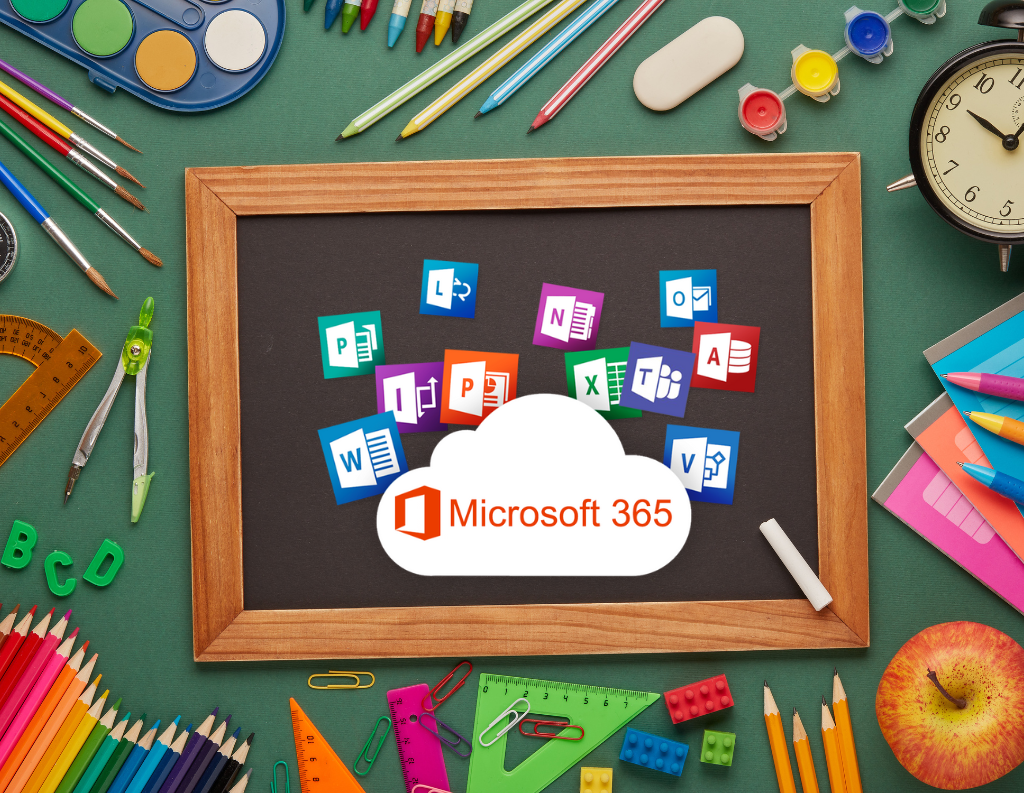As technology transforms education, schools seek solutions that offer affordability, ease of use, and enhanced learning outcomes. That’s where Microsoft 365 for School shines. If your school still juggles outdated systems or struggles with multiple software platforms, it might be time to switch to Microsoft 365 for School. Let’s dive into the key benefits that make this platform a game-changer.
What is Microsoft 365 for School?
Microsoft 365 for School is a cloud-based productivity suite designed for students and educators. This plan includes essential tools like Word, Excel, PowerPoint, OneNote, and Teams, which work together to foster a collaborative learning environment. Schools can choose from different tiers (A1, A3, A5) that range from free to feature-rich paid plans to suit their needs. When our school first adopted Microsoft 365 for School, I felt a bit overwhelmed by the variety of tools. But as everything seamlessly integrated, it clicked. Managing assignments and communication became far easier.

1. A Cost-Effective Solution for Schools
Microsoft 365 for School appeals to schools largely due to its cost—or lack of it, for eligible institutions. The free A1 plan provides access to all essential apps, including Teams and OneDrive, at no cost. For schools needing advanced features, the paid A3 and A5 plans remain affordable compared to traditional software licensing. In our school’s case, we cut down on expensive software licenses since Microsoft 365 for School included everything we needed. And with cloud storage in OneDrive, we no longer had to maintain costly physical servers.
2. Enhanced Collaboration and Communication
Effective communication is a must-have for teachers, and Microsoft Teams is at the core of Microsoft 365 for School’s collaboration tools. Whether students learn remotely or in person, Teams keeps everyone connected. Virtual classrooms, shared assignments, and real-time feedback make learning interactive and organized. OneNote, another powerful tool, acts like a digital binder where students and teachers can collaborate on notes, share lesson plans, and organize their work. I remember the relief of no longer collecting or losing paper notebooks—OneNote kept everything in one tidy digital space.
3. Improved Learning Outcomes with Interactive Tools
Microsoft 365 for School offers familiar tools like Word, Excel, and PowerPoint, enhanced to support interactive learning. Immersive Reader, for example, assists students with different learning needs by reading text aloud and breaking it down visually. The accessibility checker ensures content stays accessible to all students. Our school also started using Power BI (included in some plans) to track student progress. By quickly analyzing data, we gained clearer insights on where to improve and shape better teaching strategies. It wasn’t just about grades anymore; we focused on tracking the overall learning experience.
4. Top-Notch Security and Privacy for Schools
Security concerns every school since student records, grades, and personal information need protection. Microsoft 365 for School includes built-in security features like encryption, multi-factor authentication (MFA), and Data Loss Prevention (DLP) to safeguard school data. A few years ago, our school faced a minor security breach. Although it didn’t severely impact us, it prompted us to improve data protection. Since moving to Microsoft 365 for School, the security features have provided peace of mind, knowing our students’ and staff’s information remains protected
5. Flexibility and Scalability for Growing Schools
Whether your school is small or spans a large district, Microsoft 365 for School scales to meet your needs. Its cloud-based nature makes adding or removing users simple, and hardware upgrades aren’t a concern. Plus, students and teachers can access the platform from any device—desktop, laptop, tablet, or smartphone—giving them flexibility to work from anywhere. When we transitioned to remote learning, Microsoft 365 for School became invaluable. Students without a home computer could still join classes and submit assignments using their smartphones. The platform’s adaptability made the shift to online learning smoother than expected.
How to Get Started with Microsoft 365 for School
Getting started with Microsoft 365 for School is simple. Visit the Microsoft Education website to check if your school qualifies for the free A1 plan. For more advanced features, you can explore the A3 or A5 plans, which include enhanced security, data analytics, and additional apps.
Once signed up, Microsoft provides free training resources to help teachers, students, and IT staff familiarize themselves with the tools. I highly recommend using these resources—they made our onboarding process smooth and easy.
Upgrading your school’s technology doesn’t have to be complicated, and Microsoft 365 for School proves that. With cost-effective solutions, enhanced collaboration tools, better learning outcomes, and top-notch security, Microsoft 365 for School is the ideal platform for schools aiming to modernize their tech infrastructure. Take the first step today and give your school the upgrade it deserves!
